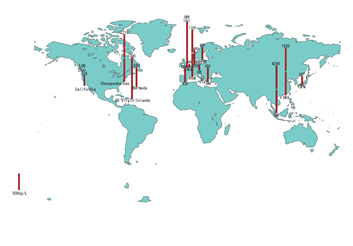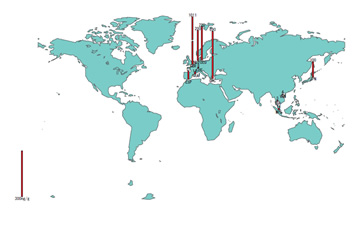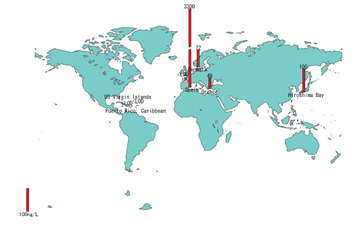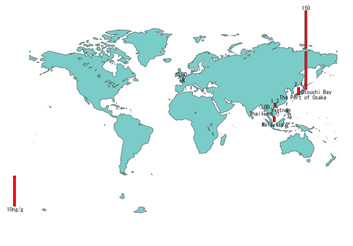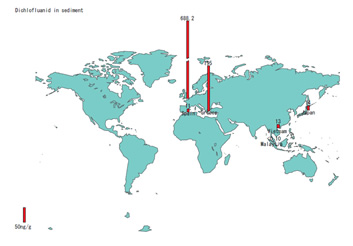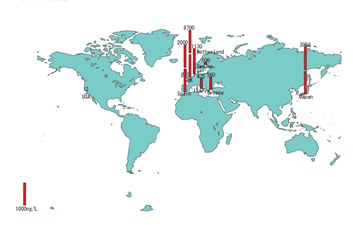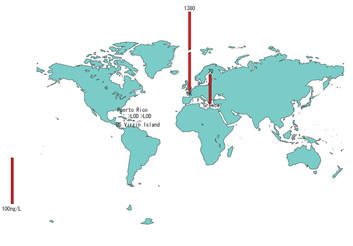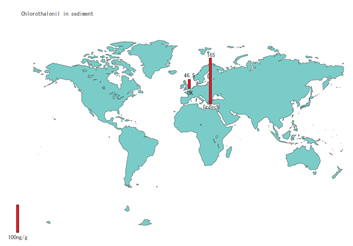Ongoing Research
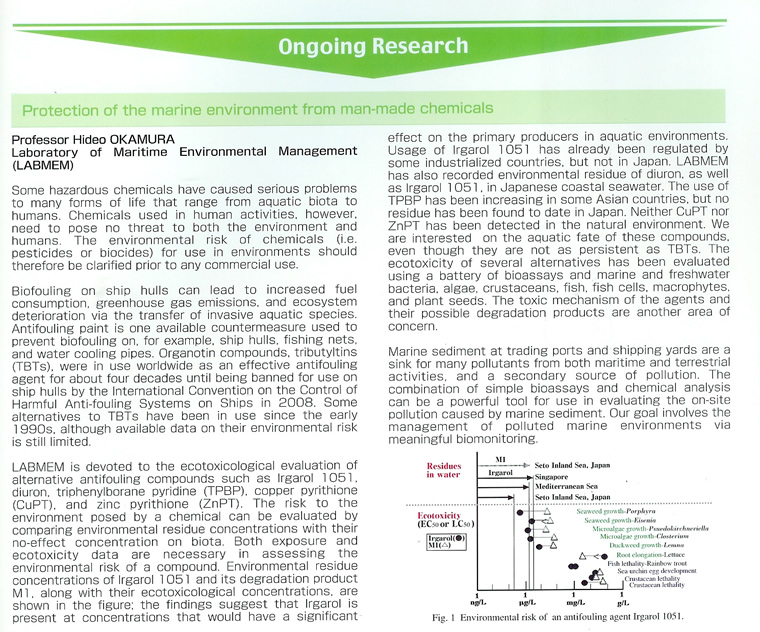
防汚剤? Antifouling Agents used in Japan
船底に生物が付着すると、操船性能に支障がでるだけでなく、燃費が悪くなり、地球温暖化ガスの排出量も多くなり、船体外板に付着した生物が越境移動したり、などの悪影響が生じます。この生物付着(生物汚損とも言います)を防ぐために、防汚塗料が使用されます。防汚塗料製品の殆どには、防汚剤と呼ばれる化学物質が使用されています。わが国では、以下に示す化学物質が使用されていますが、それぞれの生産量、使用量などは公開されていません。また、防汚剤を含まない防汚塗料も開発され、使用されています。防汚塗料は、船舶だけでなく漁網や冷却水管などにも使用されています。Biofouling on ship hull could cause increase in fuel consumption, increase in green house gas emission, and ecosystem deterioration by the transfer of invasive aquatic species through biofouling of ships. Antifouling paint with/without biocides is one of the measures to prevent biofouling on ship-hull, fishing net, and water cooling pipe etc. Several antifouling compounds used in Japan are shown below. The statistics on the amount of production and consumption of the biocides are not available.
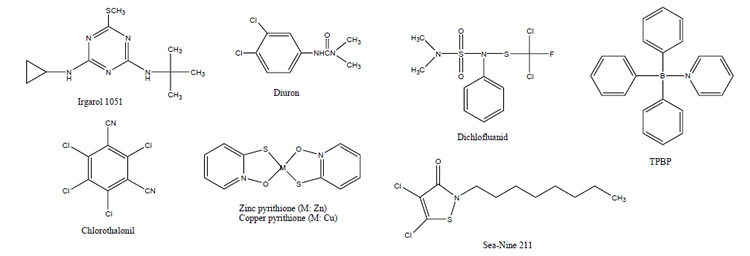
防汚剤の環境残留? Environmental Persistence of Antifouling Agents
世界各国の水域で検出された有機スズ代替防汚剤の環境残留データ(水および底質に検出された最高濃度)を、1993年から2009年までの文献を元に、世界地図にプロットしました。防汚剤が水環境に検出されることは、防汚剤の環境残留性が高いことを示しています。The map shows the representative maximum concentrations of antifouling agent detected in water or sediment in one nation, originated from the references published in 1993-2009.
Irgarol 1051 in seawater
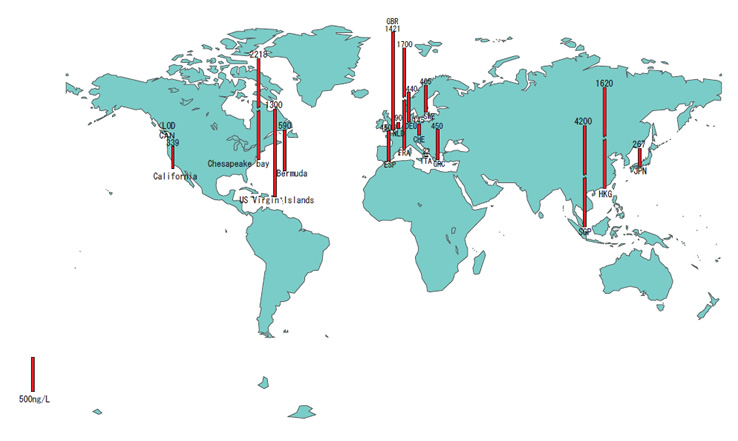
Irgarol 1051 in water and sediment
Sea-Nine 211 in water and sediment
Dichlofluanid in water and sediment
Diuron in water and sediment
Chlorothalonil in water and sediment
ここに示すデータを使用する際には、使用する方の自己責任で使用してください。当方は責任を負いません。
Caution: We do not have any responsibility for the loss occurred by the use of the data shown here. You have to utilize the data with your own responsibility when you use the data.









